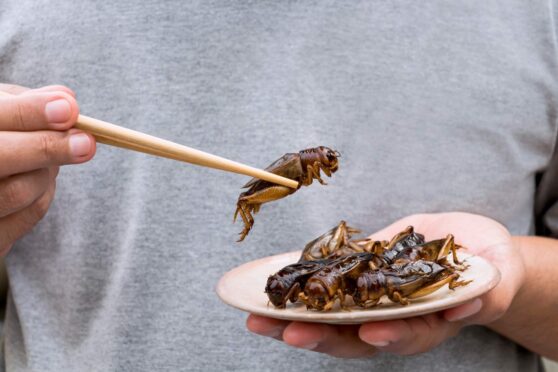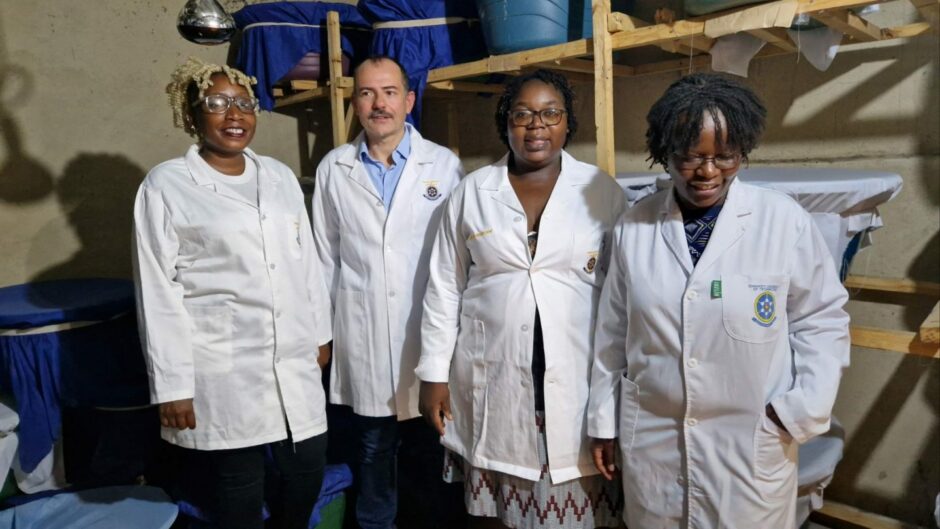Scientists at Abertay University in Dundee are working with Zimbabwean colleagues to farm protein-rich crickets as a sustainable food source.
The agile insects are eaten in countries across Asia, Africa and other regions because of their high protein content
Food innovation researchers at Abertay and Chinhoyi University of Technology discovered that changing what crickets eat increases their nutritional value and growth rate.
Led by Professor Alberto Fiore of Abertay’s Division of Engineering and Food Sciences, researchers feed the insects soya beans, sunflower seeds and sweet potato leaves instead of chicken feed.
Then, the research team analysed the nutritional value of the insects.
It was found the high protein in the beans and seeds boosted growth and in turn, changed the nutritional value of the insects.
This means they can be farmed to meet the nutritional needs of people and be included as ingredients for protein powder in food.
The high protein content and reduced use of resources needed for cricket farming over livestock such as cattle makes it favourable for food products and the environment.
The work is funded by UK Research and Innovation (UKRI), a public sector-funded research body.
‘Highly sustainable source’
Professor Fiore said: “Abertay University is passionate about tackling climate change and this new model is something that we hope to explore further with other partners keen to develop products from this highly sustainable source.
“This project proved that we can create a change in nutritional profile in these insects and that insect farming can be a viable commercial pathway.
“By managing the crickets’ food sources, they can become a valuable source of base protein for products such as pasta, bread, cookies, snacks and smoothies.”
Working with Professor Fiorie are Dr Moira Leadbitter of Abertay University, Dr Faith Angeline Manditsera from the Chinhoyi University of Technology and Eng Esnath Divasoni of Jumping Protein, a food product company in Zimbabwe.
The UKRI funding enabled the company to set up experimental units at their farm near Harare.
‘Impact our communities’
Dr Manditsera said: “We were delighted to partner on this project which supports our mission of educating and developing people for roles in the food industry and conducting research with impact for our communities.”
‘Future food source’
Ms Divasoni of Jumping Protein said: “Crickets are a global food source of the future and a climate positive way of producing protein that is far more effective than livestock farming.
“Working with Abertay and Chinhoyi has helped us progress towards our vision of moving towards a more effective production stream and creating a network of insect farmers that can create income for rural communities.”













Conversation